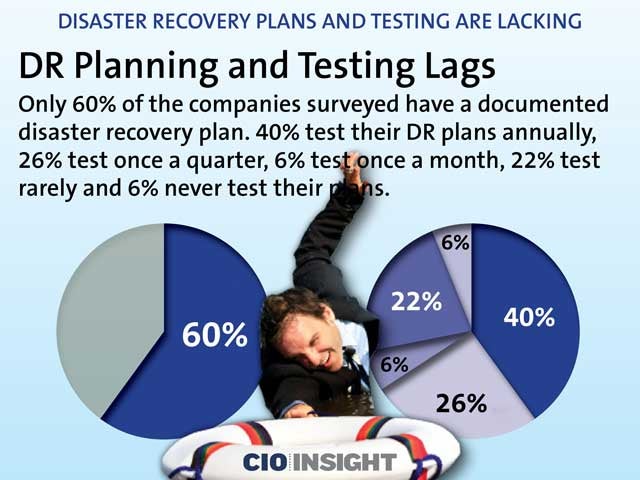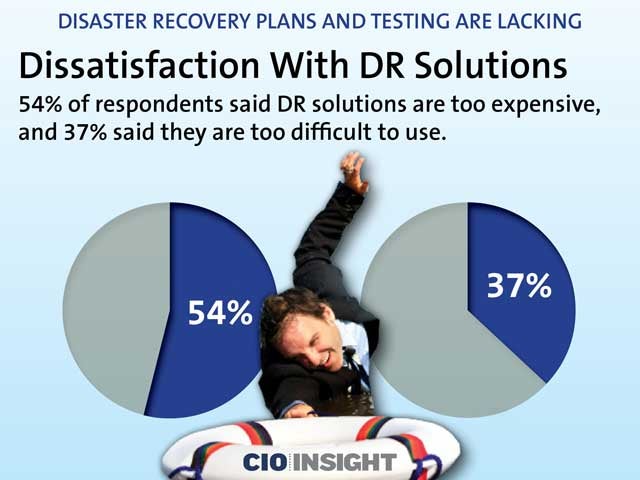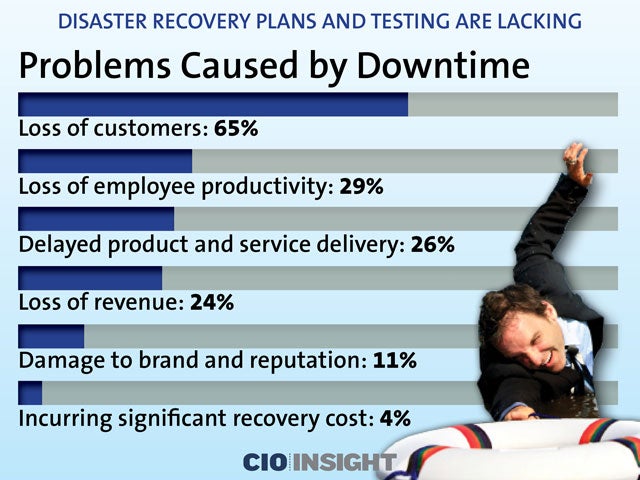
Disaster Recovery Plans and Testing Are Lacking
 Disaster Recovery Plans and Testing Are Lacking
Disaster Recovery Plans and Testing Are Lacking
Forty percent of companies surveyed don’t have a documented disaster recovery plan, and 40 percent of those that do have a DR plan test them only once annually.
 DR Planning and Testing Lags
DR Planning and Testing Lags
Only 60% of the companies surveyed have a documented disaster recovery plan. 40% test their DR plans annually, 26% test once a quarter, 6% test once a month, 22% test rarely and 6% never test their plans.
 Dissatisfaction With DR Solutions
Dissatisfaction With DR Solutions
54% of respondents said DR solutions are too expensive, and 37% said they are too difficult to use.
 DR Plan Boosts Confidence
DR Plan Boosts Confidence
78% of respondents who are confident in their DR strategy have a formally documented plan.
 Cloud-Based DR Helps
Cloud-Based DR Helps
90% of the respondents who use the cloud in their DR solutions expressed confidence in that strategy, whereas just 74% who use only on-premise DR solutions feel confident.
 Common Causes of Downtime
Common Causes of Downtime
Power outage: 75%,
Hardware error: 53%,
Human error: 35%,
Virus or malware attack: 34%,
Data corruption: 26%
 More Common Causes of Downtime
More Common Causes of Downtime
Unexpected updates and patches: 24%,
Natural disaster: 20%,
Expected updates and patches: 20%,
On-site disaster: 11%
 Reliability Is Critical
Reliability Is Critical
Asked the most important factor in a DR solution, 54% of respondents named reliability, followed by simplicity (16%), cost (16%) and speedy recovery (15%).
 The Cost of Downtime
The Cost of Downtime
67% of the respondents estimated that their business would lose more than with $20,000 as a result of downtime. 27% reported that downtime would cost more than $100,000 per event.
 Problems Caused by Downtime
Problems Caused by Downtime
Loss of customers: 65%,
Loss of employee productivity: 29%,
Delayed product and service delivery: 26%,
Loss of revenue: 24%,
Damage to brand and reputation: 11%,
Incurring significant recovery cost: 4%
 Re-evaluating DR Solutions
Re-evaluating DR Solutions
After their last downtime incident, 55% of organizations changed their DR strategy, 55% changed or added DR technology, and 39% increased their DR investments.